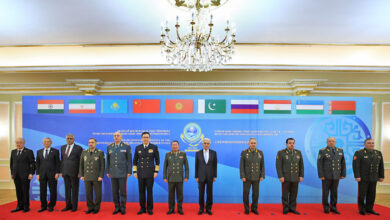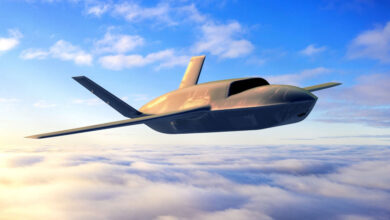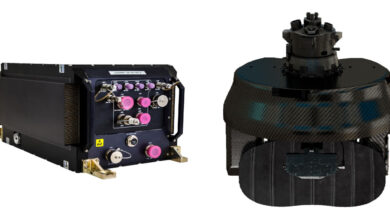White Paper: Integrated Digital Battle Field Mechanised Operations
By Maj Gen Lav Bikram Chand, VSM (Retd)
“If Tanks Succeed, then Victory follows”
– Heinz Guderian
Abstract: Air power may soften the target, but swift action of clearing the ground through decisive ground action makes the victory permanent. Mechanised Warfare is a battle winning factor against the entrenched forces in plains and deserts (and now Tibetan plateau regions. The swiftness of their manoeuvres – high mobility, lethal fire power, shock action and surprise win the battle. Mechanised Forces are sensitive to ground conditions (tank-ability), limited visibility and vulnerability to long range anti-tank weapon systems both ground and Air demands. To counter these, surveillance-deep into enemy territory; early discerning of potential threats and swift counter manoeuvres are operationally important. Effective Command and Control and coordination in action (fire & move and conceal) are of paramount importance for a mechanised force. The modern Digitised Battel Field operational connect between ISR and fighting echelons is of prime importance. Equally important is the protection of Mechanised Forces against Aerial attacks. The pace and intensity of battle field offers a very small window of opportunity to act decisively. A modern Battle Field Management System that enables the commanders at all levels to exploit this opportunity in a timely manner is often the battle winning factor. Having an effective Modern Communication System that networks all entities participating in a battle has never been more important. Digital Radios (AFV Net Radios currently in use) are incapable of interconnecting the fighting, ISR, supporting arms (Attack Helicopters, UAVs/ Drones, Arty, Air Defence, Combat Engineers) and logistics elements. There is a need to incorporate a truly Infrastructureless mobile wireless network communication system in Modern Mechanised Forces.
Networking systems that are suitable to support mechanised warfare are Satellite Communication-on the Move, Mobile Cellular (erstwhile MCCS of Indian Army), WiFi Hotspot based network and Mesh Mobile Adhoc Network (Mesh MANET). USA, UK, France, Germany have found high capacity IP-Mesh MANET as operationally most suited for Tactical Communication System. The main feature that tilts the balance in favour of high capacity IP-Mesh) is that it can be truly Infrastructureless, add-on-to-addon kinetic network. ‘Due to its mesh architecture, counter jamming schemes and ability of Cognitive radio, it has high availability even in an intense Electronic Warfare environment’.
Indian Armed Forces are also procuring SDR with Mesh MANET capability. These offer networking capability with bandwidths of 1 or 2 Mbps and in a 32 Node (network) configuration. Wireless networks with this kind of capacities are inadequate to support an integrated battle groups in totality. It is a golden rule that, “a system should have operational relevance (capability vs Operational Need)for at least ten years post induction. The capacity should not prove operationally insufficient during initial stages of induction. Indian Armed Forces, proposed, Mesh MANET (V/UHF) will be inadequate to support a truly integrated large battle group (Inadequacy of Band width, Size of MANET (nodes) and more importantly availability of Frequency spots to simultaneously support CNR and Mesh MANET).
To overcome this inadequacy of BW and number of nodes high capacity IP-MeshMANET with Coded Orthogonal Frequency Division Multiplexing (COFDM) have been developed. This offers BW in excess of 87 Mbps with network size of 120 nodes or more, fully secure (AES 256 FIPS Certified) and versatile to connect Aerial Platforms (UAVs/ Drones), Internet (or Intranet), Telemetry, IoT etc. M/s Exicom (India) LLP is developing and manufacturing this technology under make in India Programme.
Introduction
1. Swiftness of Mechanised operation makes them ideally suited for leading the thrust lines into the enemy territory in deserts and plains. Mechanised operations are complex primarily due to the close coordination required between the fighting echelons with recce and surveillance elements (ground based, air and space based) that provide battle field transparency, fire support elements – arty, engineer columns that assure mobility across obstacle ridden terrain, attack hepters and Air Force, logistic elements and most importantly the ICV columns and infantry. In this milieu of varying war fighting elements, coordination and swift & timely grouping and re-grouping is the winning card. Minimising tactical pause is important. Good networking of all entities is of operationally important. Current system of voice command with limited data over V/UHF radio is inadequate to meet the operational requirements of digital battle field. Digitisation of Battle field is one of the stated objectives of Indian Armed Forces. The premier Tac C3I Projects and at a later date Battle Field Management System are a step towards digitisation and net-centricity. In the tactical battle area, connectivity is best provided by wireless systems. The focus of this white paper is on how the mechanised forces operations are serviced by tactical communication network. And how SDR Mesh MANET has emerged as the preferred option for the mechanised operations in the western Armed Forces. Era of Modern Digital Battlefield is dawning. “Armed Forces need to be prepared to operate in this Modern Digitised Battle Field.”
Operational Requirements – Mech Forces Tactical Communication System
2. Based upon the typical concepts of Mechanised Forces and the Communication resources in the Organisation of Armoured and Mechanised Units, the operational requirements of the communication system for modern Mechanised Forces have are specified in below.
Important Services and Characteristics of Network
- Voice continue to be of prime means of Command & Control (C2) communications. (Voce over IP is the new norm).
- High speed; low latency Data communications are important for sharing common operating and situational awareness picture amongst all relevant entities. Battlefield transparency is important.
- Speed of operations and swift grouping and re-grouping necessitate that the data communications should be networked with plug and play features.
- Optical sensors (Day / Night Mil Grade Cameras – Aerial / mast mounted / Tank Mounted e.g. LOROS, UAVs, Drones, NVDs on board) and imagery are most effective means of surveillance devices. Digital battle field Tac NW for Mech Forces must support Voice, video and data.
- Tactical spread of mechanised forces is governed by the grouping and the Tactical Formation adopted in battle field. A mobile self-forming network enhance the speed of operations of a Combat Group / Command. Network should ideally be addon-to-addon; meaning authorised nodes (Radio Sets) should automatically form part of the network and network size and spread should increase accordingly.
Geographical Spread
- Mech Ops are highly coordinated amongst all entities (Ops, ISR and logistics). To connect these and to maintain hierarchical operational connection a variety of Radio Sets are provisioned. For range extension re-broadcast capability is also provisioned. The network must –
- At Combat Team level –
- Within CT – 1 to 2 Kms
- CT to CG (Combat Group) – 5 to 10 Kms
- At Combat Group Level –
- Within CG – 5 to 10 Kms
- CG to Combat Command – up to 50 Kms
- With Recce and Support Elements – 5 to 10 Kms
- At Combat Team level –
- Longer Ranges in excess of 50 Kms are also required in Combat Command level operations.
Capabilities of Network
- Network must be Jamming Proof and have redundancy.
- Network should be versatile enough to provide connectivity to integral sensors and make it available across the network.
- Sensor (UAVs, Tactical Drones launchable from mobile platforms like AFVs/ ICVs) feeds covering the area of interest and area of influence.
- Connect to the Tactical Communication Network or the Static networks (ASCON, NFS etc).
- Ideally should be a Mobile Infrastructureless Wireless Network – Mesh Mobile Adhoc Network (MANET) fits this category. {CNR is a true example of Infrastructureless Communications}.
- Band width should be adequate to support video for each entity.
- Considering the organisational size of CGnetwork must support more than 120 nodes in a Mesh.
- Network must be secure (with at least AES 256 FIPS Certified encryption till an indigenous encryption for MANET is developed).
- Must seamlessly connect to sensors (Radars, Optical, Video, IR etc)
“To summarise the network should be a kinetic Addon-to-Addon Mesh MANET, capable of rolling-out in tactical space in synch with progress of battle. Capacity-wise should support Video – effective means of surveillance {translates to Band-width in excess of 87 Mbps} and support network size greater than 120 Nodes; support connection with Aerial Networks/ platforms.”
Mesh MANET Operational Deployment
3. A network that matches the mobility, versatility and attachments and detachments of Mechanised Forces would be operationally ideal for the Mechanised Operations. Diagrammatic representation of such a concept being used by UK, German and Jordan mech ops is given in Figure 1 and Figure 2. A Radio Set that, in addition to networking is versatile to connect to all integral elements; Surveillance systems/ entities; airborne ISR systems; connect to Tactical Communication Systems and Terrestrial Communications would not only ensure commonality in inventory, ease of repair & maintenance but also provide redundancy. High Capacity Secure, low latency Mesh MANET with ease of maintenance in field conditions is emerging as the preferred network of Modern Armed Forces. A state-of-the-art Mesh MANET Is suited for multiple functionalities like networked voice, video, robotics, swarm, Autonomous vehicles Surface/ Sub-surface/ Air, robotics, unmanned combat engineering operations etc.
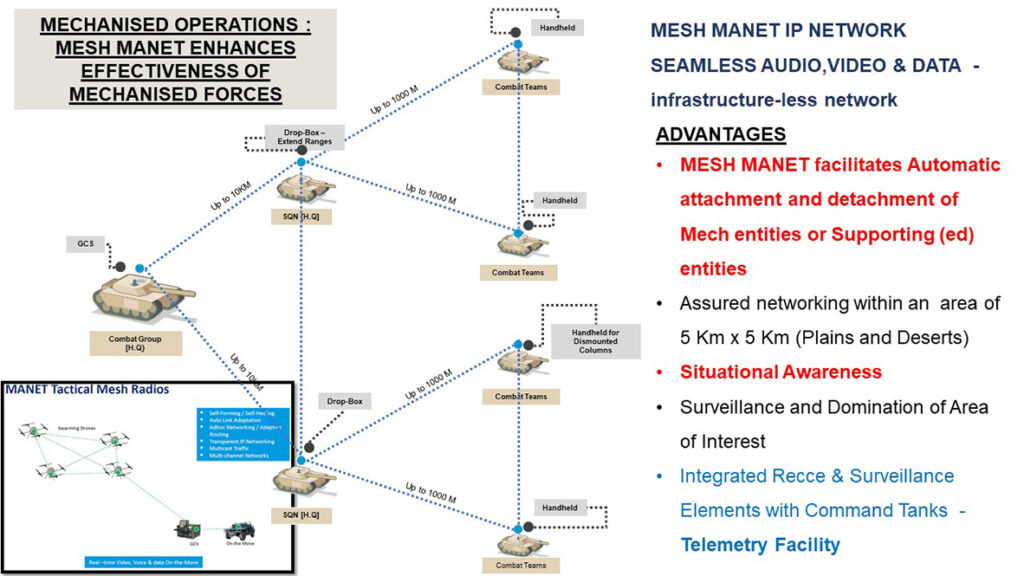

4. Modern battles are coordinated efforts of Air/ Space resources, ISR, Weapon systems (Artillery Bombs and Missiles), Attack Hepters, Land Battle Units, EW Protection Suits/ units, Cyber and Psy Operations. The networking challenge is compounded by the fact that many of the air and ISR resources are shared by multiple military columns. Their inclusion in the network therefore is time critical and for limited time operational relevance. Mesh MANET is emerging as the preferred choice to interconnect all these entities.
HI-CAPACITY IP-MESH HARDWARE

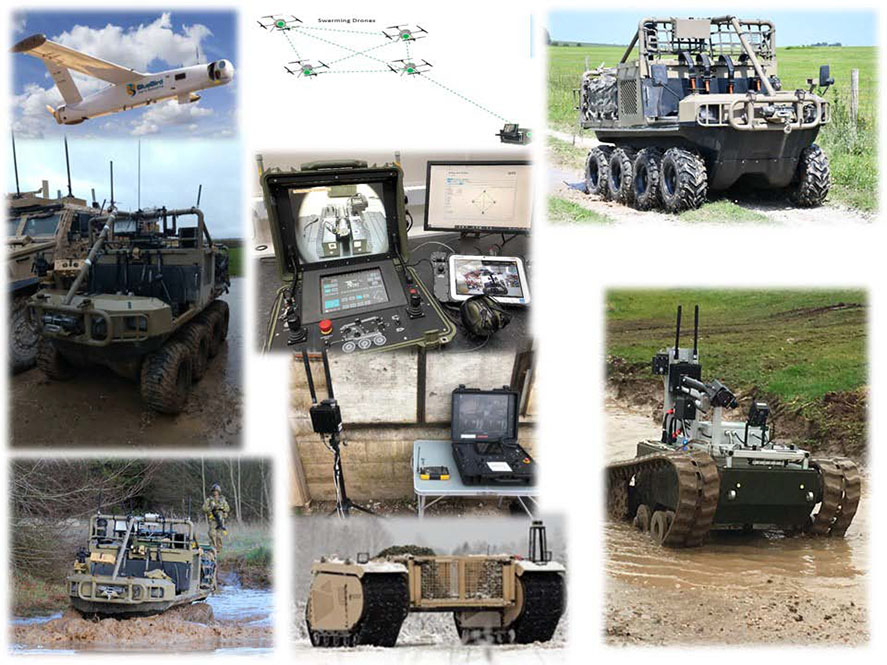
Modern Concepts
(Maj Gen L B Chand VSM (Retd) is Senior Advisor Innovation & Technology, Exicom Technologies (India) LLP, which is at the forefront of introducing cutting-edge technologies for Digital Battlefields).



